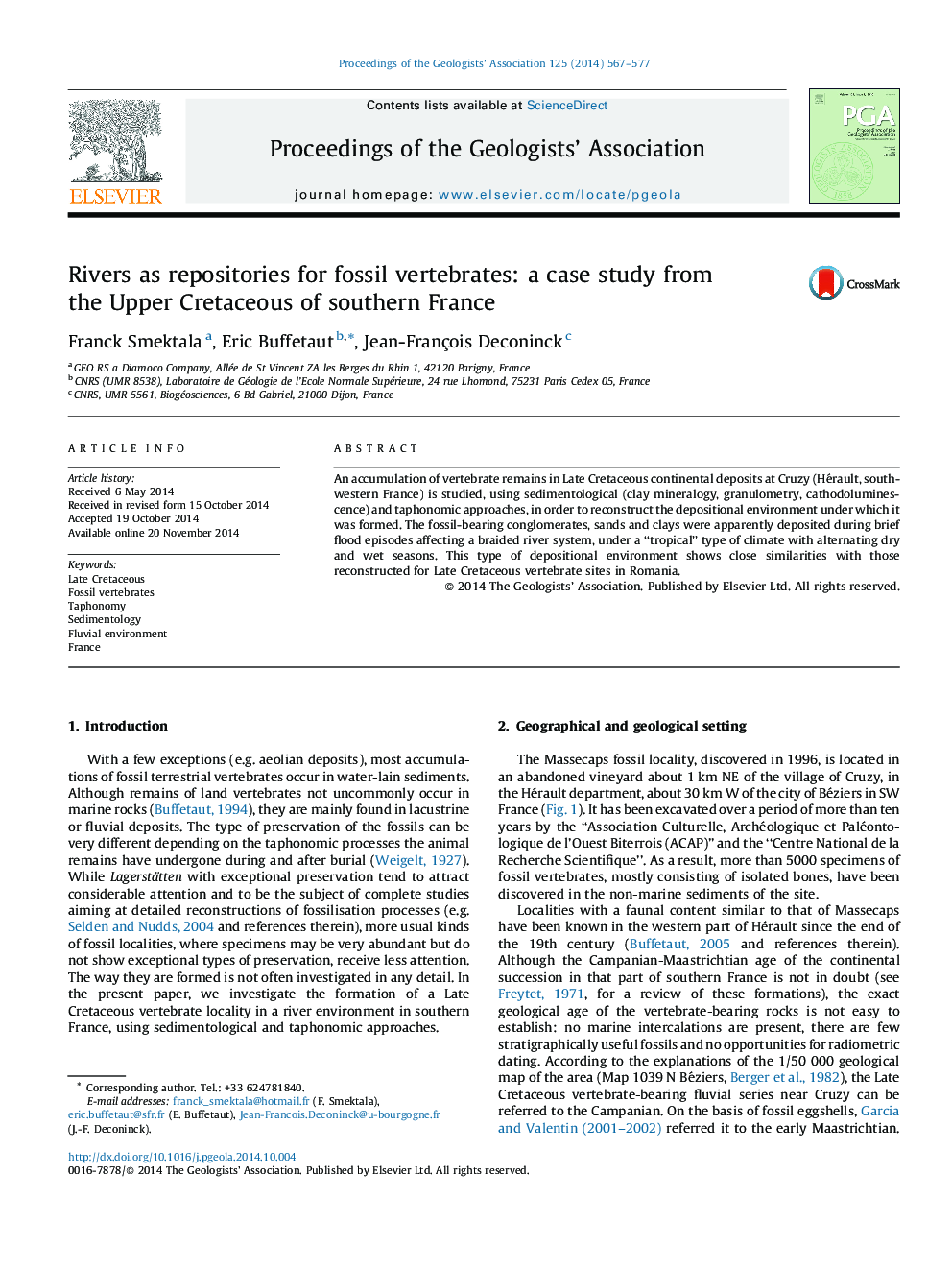| Article ID | Journal | Published Year | Pages | File Type |
|---|---|---|---|---|
| 4735001 | Proceedings of the Geologists' Association | 2014 | 11 Pages |
Abstract
An accumulation of vertebrate remains in Late Cretaceous continental deposits at Cruzy (Hérault, south-western France) is studied, using sedimentological (clay mineralogy, granulometry, cathodoluminescence) and taphonomic approaches, in order to reconstruct the depositional environment under which it was formed. The fossil-bearing conglomerates, sands and clays were apparently deposited during brief flood episodes affecting a braided river system, under a “tropical” type of climate with alternating dry and wet seasons. This type of depositional environment shows close similarities with those reconstructed for Late Cretaceous vertebrate sites in Romania.
Related Topics
Physical Sciences and Engineering
Earth and Planetary Sciences
Geology
Authors
Franck Smektala, Eric Buffetaut, Jean-François Deconinck,
